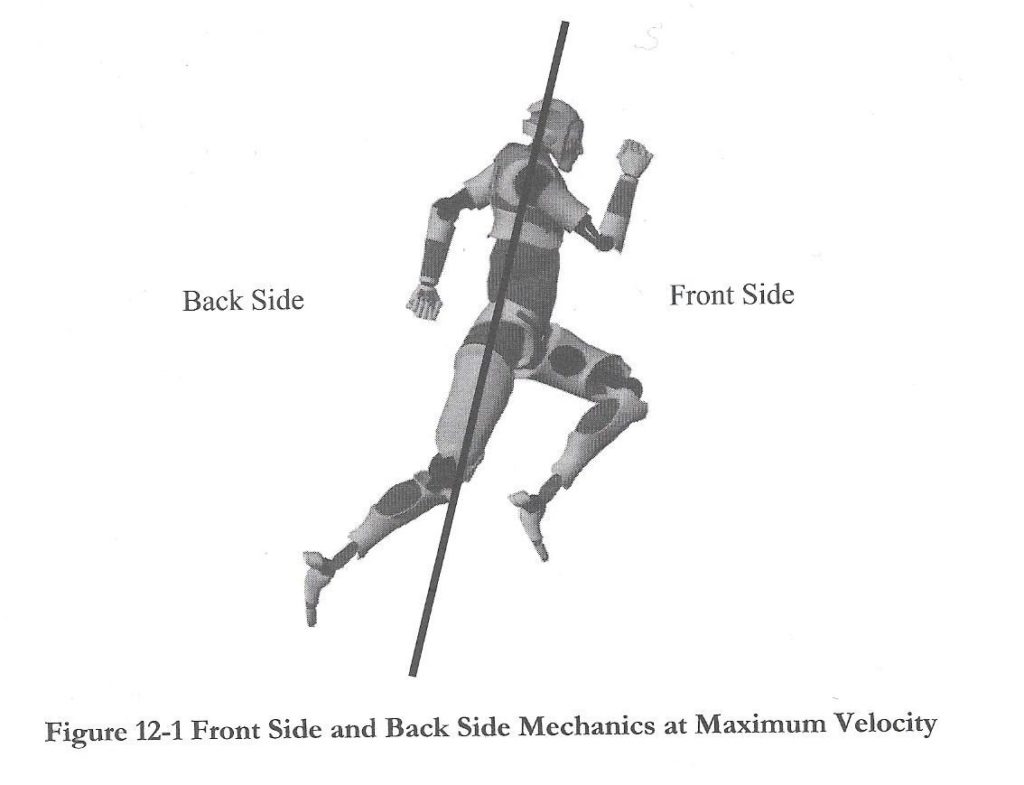The old school/new school idea as far as I can trace back, arose some 10-12 years ago in the US, when the concept of front-side mechanics came up (1)

Front- side mechanics is the in itself plausible idea that the front-side of the running stride is important too, but in my opinion it is exaggerated in the sense that it is considered to be more important than back-side mechanics. The application of this concept can be seen in the development of exercises that focus on the front- side phase of sprinting.
Of course this does not make sense at all. Simply because front-side and back-side mechanics are inseparable parts of the running stride, where a proper back-side mechanics prepares for a proper front- side mechanics and a proper front-side mechanics sets up for a proper back-side mechanics!
Also, the relative proportion and importance of mechanics depend of the phase in the 100 meters, we can see different proportion in the start and acceleration phase and in the maximum speed phase.
As a matter of fact, the discussion about a more active front-side mechanics is almost 50 years old. In the groundbreaking book of Toni Nett: “Der Sprint”, these topics were already raised and discussed, like the extension of the rear leg in the take-off (back-side) and the active clawing action in the frontside-phase.(2)
Often young coaches talk about “old school” training concepts, which is strange to me, not in the least because nobody is able to define old school nor new school. Is it the age of the coach? Nor does the word “old” or “new” say anything about the effectiveness of the concept. How would you rate the training of Usain Bolt? What would be the criteria to see a sprint training concept as being “old school” or “new school”. Is it divided purely along the lines of front-side vs. backside mechanics, like front-side = new school, back- side = old school? Is it based on the choice of exercise and drills? Is something new school because you use instability exercise, TRX and speed ladders, or do a lot of cross-fit with your athletes?
Recently a pretty good research article appeared about the phenomenon of front-side mechanics, you’d better read it yourself, but let me surprise you with the summary of the result of this biomechanical research: “Overall, the present findings did not support that front-side mechanics were crucial for sprint performance among the investigated sprinters”.
Their overall conclusion was: “Front-side mechanics did not predict maximal linear sprinting performance in the present group of sprinters. Even though several front- and back-side variables were largely associated with accelerated running performance, their relationship directions were opposite compared to how the theoretical concept has been described. Instead, the current results emphasize the importance of optimal knee- and hip extension at the point of lift-off. And: “The present results do not support the importance of the concept of front-side mechanics for sprint running performance. Thus, this concept should not be regarded as generally applicable”. (3)
My observations are that we see a lot of young sprinters trying to apply front-side mechanics by trying to make holes in the track. Talking to coaches and athletes the two wide-spread assumptions here are:
1. the sprinter should apply more force on the ground…. so basically, the harder you pound the track, the faster you go? A higher vertical force is the result of sprinting faster, not the cause!
2. the shorter the contact-time, the faster you run…. in my opinion, the best way to create a shorter contact-time is to run faster, not the other way around!
The contact-time is determined by how fast you run, or else how fast you are able to move your center of mass (e.g your hips) during the contact-time. Suppose your legs are 1.00 meter long and you move your center of mass more or less horizontally 1.00 meter while sprinting 10 meters per second. So you cover that 1 meter in a contact-time of 100 msecs, or 0.10 seconds, but when you run 11 meters per second, your contact-time will be 1.00 meter/11.0 = 91 msecs or 0.091 secs.

In short: personally, I am a fan of the no-school approach, a mixture of old ideas that stood the test of time, and new concepts that are the result of increased knowledge, experience and technology. “Old” and “new” inadequate concepts to describe a sprint training concept.
1. Mann, R.V: The mechanics of sprinting and hurdling, 2011 Edition
2. Nett, T: Der Sprint, Bartels & Wernitz, 1974, pg.215-220.
3. Haugen, T; Danielsen, J; Alnes, L.O; McGhie, D; Sandbakk, O, Ettena, G: On the importance of “front-side mechanics” in athletics sprinting; Int. J. Sports Physiol Perform. Vol.13, No.4, April 1, 2018, pg. 420-427.

Hi,
I just wanted to clarify your example. Is what you’re saying that the improvement of foot contact time by nine hundredths of a second over the course of a hundred meters equates at best to a tenth of a second?
So you are left with a 0.9 second improvement from 11 to 10 seconds which isn’t accounted for, hence the need for speed in the sprinting motion?
I find your presentations interesting, is this gone into greater depth (technique/drill wise) in your What we Need is Speed book?
Regards,
Alem
Hello Alem, millisecond is thousands of a second. So from 100 msec to 91 msec or from 0.100 second to 0.091 second = 9 thousands of a second (that is pretty short). Assuming 48 strides in the 100 meter, 48 times 0.009 = 0.432 seconds, but it cannot in this way be used to calculate the overall improvement in 100 meter time, because when you run faster, not only the contact times decreases, but flight time and stride length, and stride number and frequency also change! Most of the calculations of this kind are therefore oversimplifications of a complex phenomenon.
I have been writing about drills and sprinting technique in older posts.